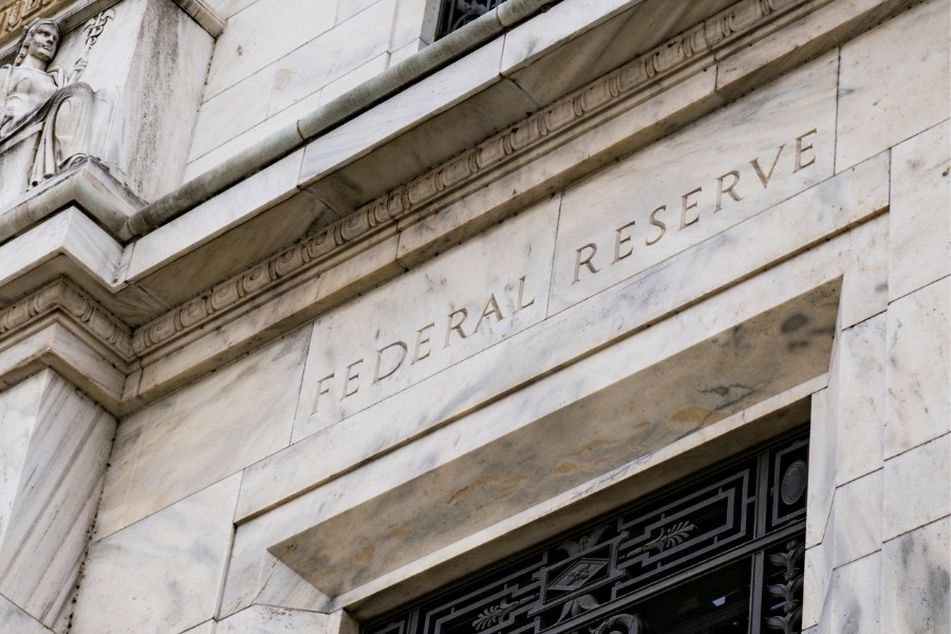Lack of progress on inflation forces hawkish Fed hold

Policymakers at the US central bank raise fresh concerns around price pressures.
The Federal Reserve signaled fresh concerns about inflation as it reaffirmed it needs more evidence that price gains are cooling before cutting interest rates from a two-decade high.
Officials unanimously decided to leave the target range for the benchmark federal funds rate at 5.25% to 5.5% — where it’s been since July — following a slew of data that pointed to lingering price pressures in the US economy.
“In recent months, there has been a lack of further progress toward the committee’s 2% inflation objective,” the Federal Open Market Committee said in a statement Wednesday at the conclusion of a two-day meeting in Washington. That represented an addition to phrasing introduced in December saying that inflation “has eased over the past year but remains elevated.”
In another change, the Fed said that risks to achieving the Fed’s employment and inflation goals “have moved toward better balance over the past year,” referring to the progress in the past tense. The previous statement said the goals were “moving into better balance.”
Policymakers stopped short of signaling they would consider raising rates again.
Officials also outlined plans to slow the pace at which the central bank is shrinking its asset portfolio. The Fed will cut the cap on runoff for Treasuries to $25 billion a month from $60 billion beginning in June, in a bid to reduce the risk of financial-market turbulence that struck during the previous round of balance-sheet trimming in 2019.
The cap for mortgage-backed securities remained unchanged at $35 billion, though the Fed will in June reinvest any principal payments above the cap into Treasuries instead of MBS.
On the balance sheet, policymakers generally agreed at the Fed’s previous meeting in March that it would be appropriate to take a cautious approach toward further runoff — a process known as quantitative tightening, or QT — given market turmoil in 2019, minutes from the meeting showed.
Officials have stressed that the decision to slow QT is independent of rate cuts and their timing. Fed Chair Jerome Powell will hold a press conference at 2:30 p.m. in Washington.
Inflation roadblock
While price pressures cooled rapidly in the final months of 2023, progress toward the central bank’s 2% inflation goal has stalled in 2024. Meantime, the economy continues to expand on the back of a strong labor market and steady consumption and investment.
Wednesday’s statement reiterated that job gains have “remained strong” with a low unemployment rate, while the economy has expanded at a “solid pace.”
Data out Tuesday showed employment costs climbed in the first quarter at the fastest pace in a year, topping expectations and pointing to robust wage growth.
Three straight months of disappointing inflation figures have driven a major repricing of interest-rate expectations, with futures markets now showing just one cut this year.
That’s well below the three narrowly projected by Fed officials in March and the roughly six anticipated by markets at the start of 2024. Concerns that the central bank may not cut at all this year have also grown amid questions of just how much Fed policy is restraining the economy.
Against a backdrop of a resilient economy, the pickup in prices has also led to a change in tune among Fed officials. The rate cuts signaled by Powell in December relied heavily on a continued deceleration in inflation — something that hasn’t happened.
As a result, Powell said in April that it would likely take “longer than expected” to gain the level of confidence on inflation’s trajectory needed to lower interest rates. He added the central bank can keep rates steady for “as long as needed.”
The Fed’s preferred price gauge was up 2.7% in March from a year earlier, an acceleration from the prior period. Excluding food and energy, it advanced 2.8%.
Learn more about reprints and licensing for this article.








